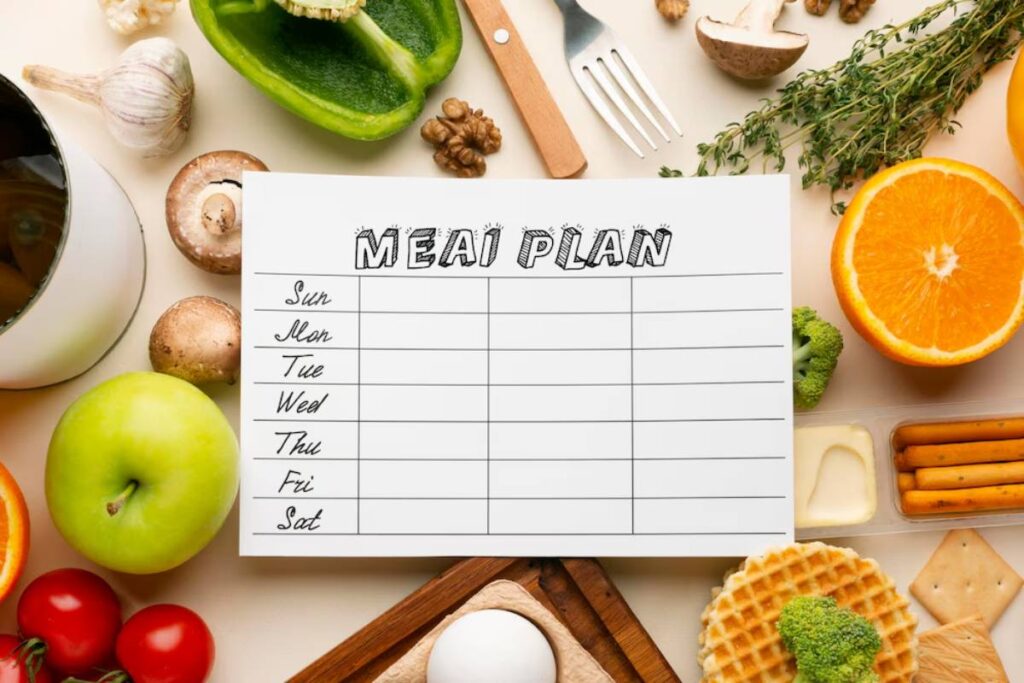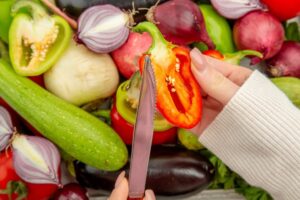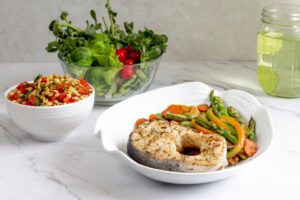The Health & Wellness Blog

7-Day Anti-Inflammatory Meal Plan for Beginners
Inflammation is a normal immune response to injury or infection. Acute inflammation aids in the healing of wounds and combating illness. It’s good in short bursts. But chronic inflammation can linger and lead to serious health problems. They include heart disease, arthritis, diabetes and even cancer. Fortunately, what you put in your body can fuel or fight inflammation. That’s where the anti-inflammatory meal plan comes into play.
If you’re new to the concept, starting an inflammation-reducing diet may feel overwhelming. But don’t worry—this 7-day anti-inflammatory meal plan for beginners is designed to be simple, flavorful, and effective.
Why Start an Anti-Inflammatory Meal Plan?
In the fast-paced world in which we live, convenience often comes with a sacrifice in nutrition. The majority of individuals eat refined sugars and processed foods, and unhealthy fats. These foods, over time, can create a low-grade chronic inflammation. Whole, nutrient-dense foods are part of the anti-inflammatory diet. These foods feed your body and reduce inflammation naturally.
Consider this beginner diet plan a guide to make healthier choices rather than a prescriptive set of rules. It is about developing a sustainable lifestyle. This The “includes” meals help fight inflammation. These meals are nourishing your long-term health and energy.
Your journey begins with what you put on your plate. You can find the way there, whether you have a chronic condition to treat or want to prevent illness or simply feel better — it all starts there.

Key Benefits of an Anti-Inflammatory Meal Plan
Why It Matters
An anti-inflammatory meal plan does more than lower inflammation. It also offers several health benefits that boost your quality of life:
- Lower Risk of Chronic Diseases: Anti-inflammatory foods can reduce inflammation. This helps lower your chances of getting diseases like heart disease and type 2 diabetes.
- Better Gut Health: Foods rich in fiber and antioxidants nourish good gut bacteria. This helps digestion and boosts your immune system.
- Clearer Skin and Mental Focus: Many who adopt this diet report fewer breakouts and a noticeable lift in mental clarity and mood.
- Joint and Muscle Support: Foods rich in Omega-3, along with fruits and veggies, can ease joint pain and stiffness, especially for those with arthritis.
- Sustainable Weight Loss: Focus on whole foods and cut back on processed items. This helps you develop healthier eating habits and maintain a healthy weight.
Real-Life Results
There’s growing evidence to support the concept of an anti-inflammatory diet. Research published in The American Journal of Clinical Nutrition determined that diets that are anti-inflammatory have far lower levels of C-reactive protein. This is compared to those with higher inflammatory diets. The lower inflammatory diet includes the same foods associated with the anti-inflammatory diet. This is a commonly used marker of inflammation. Many who follow the diet anecdotally report more energy, better sleep and enhanced mental and physical well-being.
7-Day Anti-Inflammatory Meal Plan
To make this journey easy, here’s a day-by-day meal plan with simple, nutrient-rich meals. Each meal includes inflammation-reducing ingredients that are easy to find, budget-friendly, and beginner-approved.
Day 1: Setting the Foundation
- Breakfast: Oatmeal with blueberries, flaxseeds, and a drizzle of almond butter. Oats are high in fibre, and berries contain antioxidants that help fight inflammation.
- Lunch: Grilled salmon salad with mixed greens, cherry tomatoes, and an olive oil-lemon dressing. Salmon is rich in omega-3 fatty acids, which have potent anti-inflammatory effects.
- Snack: A handful of walnuts and an apple.
- Dinner: Quinoa stir-fry with tofu, bell peppers, broccoli, and garlic-ginger sauce. This dish packs protein, fibre, and inflammation-fighting vegetables.
Day 2: Embracing Variety
- Breakfast: Greek yoghurt with walnuts, honey, and chia seeds.
- Lunch: Hearty lentil soup with carrots, celery, turmeric, and a slice of whole-grain sourdough bread.
- Snack: Cucumber slices and hummus.
- Dinner: Baked chicken breast with sweet potato mash and steamed broccoli.

Day 3: Nutrient-Dense Choices
- Breakfast: Spinach-banana-almond butter smoothie with almond milk and a sprinkle of cinnamon.
- Lunch: Avocado chickpea salad with cherry tomatoes, olive oil, and lemon juice.
- Snack: A small bowl of mixed berries and pumpkin seeds.
- Dinner: Grilled mackerel with brown rice and sautéed green beans in olive oil.
Day 4: Exploring Flavours
- Breakfast: Avocado toast on whole-grain bread topped with poached eggs and microgreens.
- Lunch: Quinoa and black bean bowl with fresh salsa and diced avocado.
- Snack: A pear and a few almonds.
- Dinner: Turkey and veggie stir-fry with soba noodles, bok choy, and sesame oil.
Day 5: Keeping It Simple
- Breakfast: Chia pudding with unsweetened almond milk, strawberries, and a dash of cinnamon.
- Lunch: Spinach and feta omelette with a tomato and cucumber side salad.
- Snack: Bell pepper slices with guacamole.
- Dinner: Baked cod with a side of roasted Brussels sprouts and quinoa.
Day 6: Colourful Plates
- Breakfast: Whole-grain toast with almond butter, sliced banana, and a sprinkle of hemp seeds.
- Lunch: Roasted vegetable wrap with hummus and a mixed greens salad.
- Snack: A Handful of grapes and sunflower seeds.
- Dinner: Grass-fed beef stir-fry with colourful bell peppers, onions, and tamari sauce.
Day 7: Reflect and Adjust
- Breakfast: Berry smoothie bowl topped with granola, chia seeds, and fresh mint.
- Lunch: Grilled vegetables and quinoa salad with tahini dressing.
- Snack: Celery sticks with almond butter.
- Dinner: Lemon-herb grilled chicken with wild rice and roasted asparagus.
Additional Expert Tips & Common Mistakes to Avoid
Best Practices
- Batch Prep Meals: Make large portions of staples like quinoa, roasted veggies, or lentil soup for the week ahead.
- Cook with Anti–Inflammatory Herbs: Spices like turmeric, ginger, cinnamon, garlic, and cayenne are powerful inflammation-fighters.
- Choose Healthy Fats: Replace refined oils with extra-virgin olive oil, avocado oil, or flaxseed oil.
Common Mistakes to Avoid
- Skipping Protein: Make sure each meal contains a protein source (beans, fish, tofu, lean meat) to balance blood sugar and support muscle recovery.
- Overeating “Healthy” Snacks: Nuts and seeds are great, but should be eaten in moderation.
- Relying Too Much on Smoothies: While nutritious, whole meals that require chewing are more satisfying and support digestion better.
Advanced Insights / Expert Recommendations
Go Beyond the Plate
- Intermittent Fasting: Research shows that time-restricted eating can reduce inflammation markers and improve metabolism.
- Mindful Eating: Slow down during meals, chew thoroughly, and savour flavours to help regulate appetite and digestion.
- Track Your Triggers: Not every “healthy” food works for everyone. Keep a food journal to track how specific meals affect your energy, mood, and digestion.

Supplement When Needed
- Omega–3s: If you’re not eating fish twice a week, consider taking a high-quality fish oil or algae-based supplement.
- Curcumin: The active compound in turmeric can be taken in supplement form for a higher anti-inflammatory effect.
- Vitamin D: This immune-supporting nutrient can help regulate inflammatory responses.
A Healthier Path Starts Here
You don’t need to make radical shifts in your diet or purchase expensive superfoods to start an anti-inflammatory meal plan. It’s about sustainable, intentional choices that support your overall well-being for the long run. This 7-day challenge will make you feel self-assured about your food choices. You’ll also find out just how delicious inflammation-friendly meals can be.
Each mouthful is a tiny step toward more energy, clearer thinking, reduced pain, and a better immune system. As you think about how you experience at the end of the week, work to build on this momentum. Mix things up with your meals, experiment with new recipes and listen to your body.
You don’t have to be perfect — just intentional. Are you ready to send inflammation packing? So get started now, one meal at a time!









